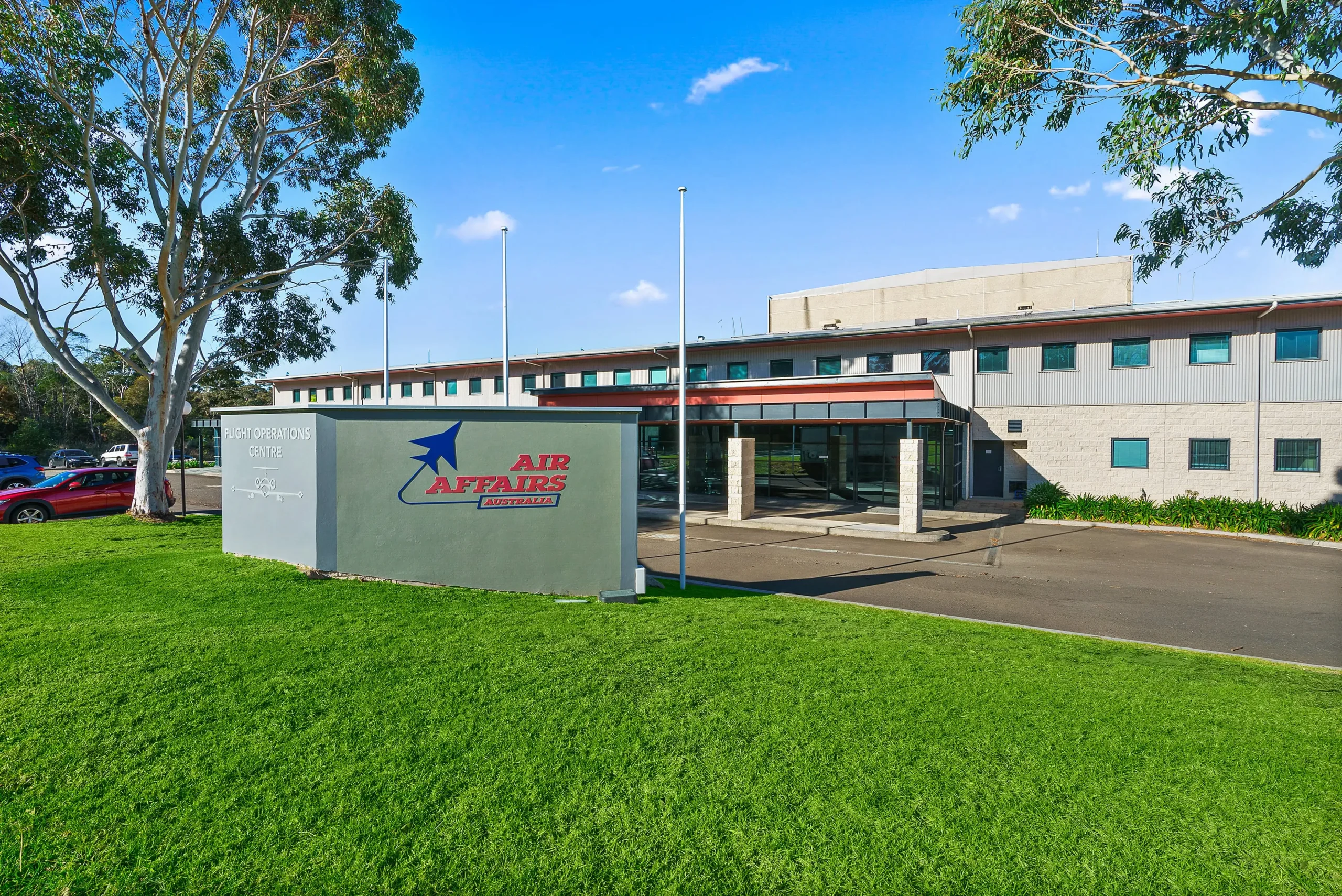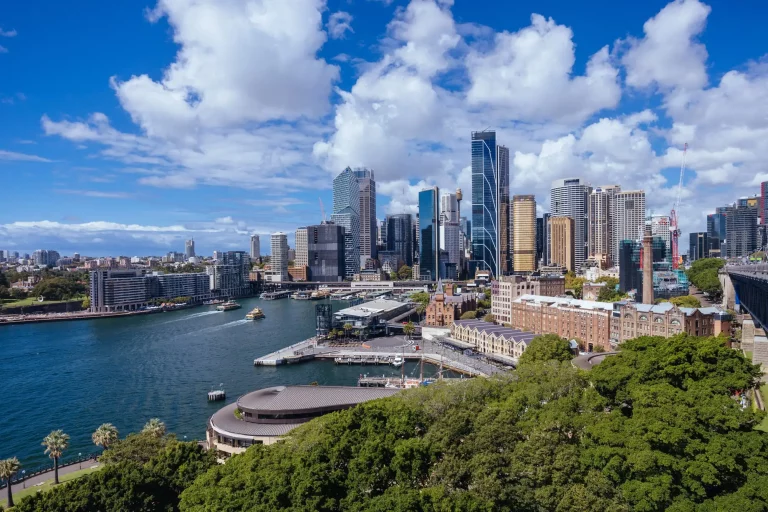Insider Insights: A Case Study of 50 Miller St with Sumner’s Kirby Parsonage
Fresh off the successful settlement of 50 Miller Street, North Sydney to the multi-asset investment company, Sun Venture, nøught labs was granted an exclusive opportunity to sit down with Kirby Parsonage, Sumner’s Head of Property, to discuss the intricacies and complexities involved in securing such a significant deal.

In this insightful interview, we delve deeply into the key strategies and tactics employed by Kirby and his team, gaining a unique perspective on the state of the industry from one of its most accomplished participants.
What was the commercial real estate scene like when Sumner first purchased the building 8 years ago? Why did you and your team decide to choose this building and what were the key considerations then?
Kirby: That’s a good starting question. Back when we first purchased the building in 2014, the major tenant then was National Australia Bank, with 2 years still remaining on their lease.
Whilst we had well and truly passed the Global Financial Crisis, there were still lingering issues around investors’ appetite for risk. With regards to real estate, the market then wasn’t attracted to vacancy, leasing and capital expenditure risks, of which the building had plenty! As a result, the purchase price of $60 million was very attractive, which reflected a purchase yield of 9.5%.
Beyond its purchase price, 50 Miller Street is located in a favourable location with direct access to a local shopping centre, a bus stop right at its front door, and 200 metres away from the nearest train station (North Sydney). The physical building itself also came with a high NABERs environmental rating of 5 (out of 6) and large, efficient floor plates of approximately 1,000sqm. So it had “good bones”, location and pricing—it just needed to be refurbished in order to attract higher rents and value.
So what made Sumner decide to sell the building? What determined the timing of the sale?
Kirby: Since we had completed the repositioning and the market was still relatively strong at that point, we decided that it was best to sell the property then so that we could capture the large value we had created.
Could you let us know more about the underwriting and investment process when selling?
Kirby: The underwriting started by forming a view around the macro-economic environment, in terms of the global economy and Australia’s economy, what the investment environment looked like now and into the short and medium term – interest rates (both current and historic), inflationary expectations, where we currently were in the cycle, etc.
We then undertook a detailed review of the existing and potential income and operational expense items that came together with an extensive review of the capital expenditure requirement for the property in order to form a view around what the forward-looking IRR might look like if we didn’t sell the property. Once this was done, we could determine whether there were better opportunities to utilise that capital rather than keeping it.
Once the analysis was finalised, we agreed with our capital partner that it was time to sell the property.
What challenges did you and your team face during the process of selling 50 Miller Street?
Kirby: With inflation taking hold and interest rates rising, it meant that assets with strong, long-income characteristics where rents weren’t hedged to CPI, like 50 Miller Street, were susceptible to a reduction in value.
As such, we knew that we needed to move quickly to ensure we obtained offers before the market deteriorated any further. Additionally, there were no reference points for investors to know where the market value of 50 Miller Street was since there weren’t as many transactions occurring at the time. We had to work hard to provide potential purchasers with comfort around such things as the high probability of the US Consulate remaining a long-term tenant, WeWork remaining an attractive occupier despite its own corporate issues and a lack of significant capital expenditure required in the short to medium term given the amount of capital we had already spent to reposition the property.
So faced with these obstacles, how did Sumner increase the value of 50 Miller Street? Or to be more specific, what were the changes made at the beginning, throughout, and at the end during the course of Sumner’s ownership when it was decided that the building was to be marketed?
Kirby: Firstly, we had purchased the property at a low point in the cycle, so there were plenty of value-adding opportunities available.
With its potential, we recognised the value creation opportunity that came with 50 Miller Street and repositioned the property’s “C” grade to an “A” grade by implementing a capital expenditure program that included:
- New entry lobby
- New elevators
- New end-of-trip facilities
- New awnings
- Upgrading the building in line with the Building Code of Australia, particularly in regards to the Fire and Disability issues that the building first presented upon purchase
- New air conditioning system
- An increase in Net Lettable Area
After that, we focused our effort on leasing the property on long leases to good major tenants. Once that was done, we just needed to wait for the right moment to sell the property at an opportune time in the cycle.
With such major tenants, could you let us know more about how the building tenants were attracted and maintained? Were there any specific building management strategies employed?
Kirby: We managed to attract the US Consulate to 50 Miller Street by being able to provide them with significant flexibility surrounding their design requirements for their office fitout. This included providing or installing items such as multiple lifts in the same lift shaft, working with them to install additional plant and machinery and other associated requirements – it was very much a collaborative approach with the US Consulate team.
For WeWork—who were rolling out a number of locations globally—we were able to entice them by providing a flexible and attractive lease structure that met their needs.
So how did Sumner manage to sell the building in such a bad market? What was the real estate scene and economy like at that point? What were the specific strategies or points of differentiation that were employed?
Kirby: With the market conditions and our analysis of the property’s projected value in mind, we focused on a number of items, including:
- Highlighting the high likelihood that the US Consulate would remain a tenant for a very long time as they had spent approximately $120 million on their fit-out.
- Providing a guide price that was attractive, particularly when compared to other assets which were being marketed at the same time.
- Providing indicative comfort around WeWork remaining a tenant in the building—notwithstanding their broader corporate issues—as a result of the good occupancy levels they were achieving. 50 Miller Street was also their only North Sydney location and we had recently negotiated a reduction in their leased area at the time to reduce the exposure to WeWork.
- Identifying 50 Miller Street as a rare opportunity to acquire a sub $200 million long WALE asset within the core North Sydney office precinct.
- 50 Miller being readily available for purchase with debt given its strong US Government underpinning.
For more information on 50 Miller Street, you can check out Sumner’s case study here or contact the Sumner team directly for more inquiries.



